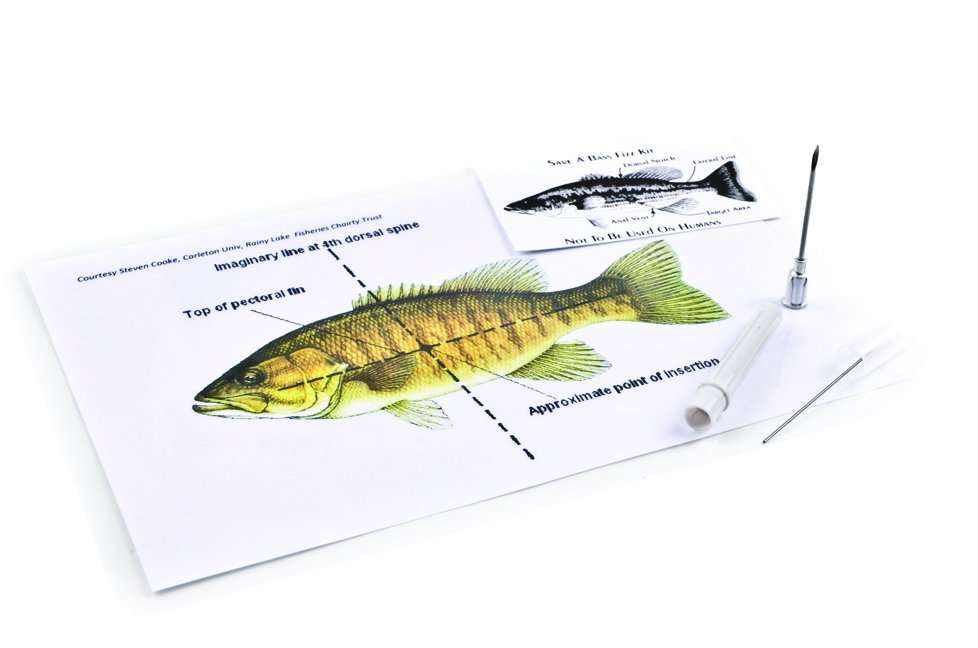
SYRACUSE, N.Y. — As Barb Elliott became involved in tournament fishing and learned more and more about delayed mortality, the new conservation director for the New York B.A.S.S. Federation Nation realized that barotrauma is “an important thing that really gets ignored.”
As a result, she developed a kit intended to encourage more anglers to side vent fish that are floating or can’t stay upright.
Barb Elliott’s fizz kit is elegant in its simplicity,” said Noreen Clough, national conservation director for B.A.S.S.
“It is straight-forward and based on feedback she got from bass biologists for both largemouth and smallmouth, it has explicit pictures of where to insert the needle in each type of bass. It comes in a waterproof bag with the right-gauged needle containing a cleaning probe.”
Pleased that Elliott took the initiative, Clough said she sees “great application throughout the northern tier states, at a minimum.”
Discovering that fizzing often is most effective when performed shortly after the fish is caught, instead of at the weigh-in stand, the New York conservation director laminated the instructional card. She also learned that using a needle with a reamer, so it doesn’t become blocked, is important.
“One of the biggest reasons people are not successful when they first try fizzing is the needle has a tendency to get plugged,” Elliott said.
She also emphasized that her research has revealed that “it does not matter how deep you caught a particular fish. If it cannot stay upright, it is no longer neutrally buoyant and needs fizzing.”
Often, anglers will think that something else must be wrong with the fish, that it can’t have barotrauma if it was not pulled from deep water.
“That’s faulty logic,” she said. “Anglers need to evaluate their fish on an individual basis repeatedly throughout the day.
“Their [fish] status changes as their stress accumulates. … If the exhaustion level becomes such that the fish no longer is able to maintain itself, fizzing should be considered.
“This is the big piece of the fizz picture that most people do not realize.”
Elliott also pointed out that fizzing is not a substitute for poor livewell management.
“Fizzing will not correct fish exhaustion and hypoxia,” the conservation director said. “Before it is attempted, it is vital to ensure these other components are properly managed.”
Elliott recommends the following for fizzing:
- If you decide that a fish needs fizzing, prepare a spot to do so before removing fish from the livewell. It should be a place that’s wet and/or will not remove the bass’ protective slime.
- Place fish on the spot and determine needle insertion point. Location is chosen differently for largemouth and smallmouth bass. (Elliott’s card shows how to find insertion points.)
- Lift scale and quickly insert needle at 45-degree angle.
- With needle still inserted, place fish in livewell and observe bubbles exiting needle.
- Quickly remove needle before too much gas is expelled. If too much gas is released, fish will no longer be buoyant and sink like a rock.
- Return fish to livewell.
If you have questions about the kit or the process of fizzing, contact Noreen Clough at nclough@bassmaster.com.
Elliott volunteered 40 hours of her time to complete this project. She handed out 100 fizz resource cards at New York B.A.S.S. Conservation Federation tournaments in 2011.
This article is part of the Fisheries Management segment of the larger report, 2011 Annual Achievements in B.A.S.S. Conservation.

